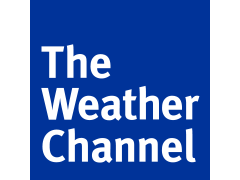Up to 70MPH winds. I've heard other forecasts saying hail is very possible.
I guess I better go straighten up the garage. I'm not that worried about hail, but those winds will definitely knock down some tree branches.
The threat of severe thunderstorms will return early in the week ahead as a strong cold front emerges from the Rockies and intercepts milder air returning to the nation's midsection.
This pattern will be favorable for thunderstorms to produce damaging winds and possible tornadoes Tuesday into Wednesday in parts of the South, lower Midwest, and eventually the mid-Atlantic region.
The maps on this page show the latest timing forecast for these storms from The Weather Channel's Global Forecast Center.
One of our biggest concerns is the amount of wind energy carried by this large-scale storm system.
Jet stream winds are forecast to easily exceed 150 miles per hour with this system. But more alarmingly, the winds in the lower atmosphere are also expected to be fierce - potentially over 100 miles per hour just 5,000 feet above the ground in some areas just ahead of the cold front.
That combination of powerful wind energy and an unstable atmosphere - even an only weakly unstable one as we often see in January - can lead to widespread straight-line wind damage.
In addition, with such a strong wind field accompanying this system, individual thunderstorms or squall lines are likely to move forward lightning-quick, at speeds of 50, 60, even 70 miles per hour, making quick action all the more important if and when severe weather warnings are issued.
Ultimately, the degree to which warm, moist air can spread north to interact with these potent winds will have a large bearing on the outcome of this event.
This pattern will be favorable for thunderstorms to produce damaging winds and possible tornadoes Tuesday into Wednesday in parts of the South, lower Midwest, and eventually the mid-Atlantic region.
The maps on this page show the latest timing forecast for these storms from The Weather Channel's Global Forecast Center.
One of our biggest concerns is the amount of wind energy carried by this large-scale storm system.
Jet stream winds are forecast to easily exceed 150 miles per hour with this system. But more alarmingly, the winds in the lower atmosphere are also expected to be fierce - potentially over 100 miles per hour just 5,000 feet above the ground in some areas just ahead of the cold front.
That combination of powerful wind energy and an unstable atmosphere - even an only weakly unstable one as we often see in January - can lead to widespread straight-line wind damage.
In addition, with such a strong wind field accompanying this system, individual thunderstorms or squall lines are likely to move forward lightning-quick, at speeds of 50, 60, even 70 miles per hour, making quick action all the more important if and when severe weather warnings are issued.
Ultimately, the degree to which warm, moist air can spread north to interact with these potent winds will have a large bearing on the outcome of this event.









Comment